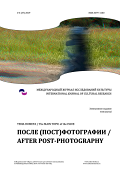first published in:
INTERNATIONAL JOURNAL OF CULTURAL RESEARCH
Scientific e-journal
4 (37) 2019: After Post-Photography
https://www.culturalresearch.ru/en/home

By discussing some composite photographic collages by Joyce Neimanas, David Hockney, and Robert Frank from the 1970s and 1980s I investigate how the three artists transform their experiences with the perception of our world into visual interplays. They deal with the limits of the “program of the camera” by tearing the fabric of reality, fragmenting it into photographs and using them as building blocks to assert their artistic autonomy from the apparatus and photographic conventions.
American photographer Joyce Neimanas sews Polaroids together like a patchwork quilt to give an impression of a comprehensive situation. British painter David Hockney takes a situation apart photographically, his Joiner Photographs appear to be multiperspective, fragmented, and animated. And Swiss-American photographer and documentary filmmaker Robert Frank´s photo compilations construct narrative sequences and blocks, he uses them like storyboards, as visual diaries.
These artists show three concepts of how to bring to the fore the process of shaping an image over time that reflects the quality of a dynamic whole. The partial meaning offered by the visible parts of the photographic ensembles encourages beholders to complete what they see, to transform it into a coherent and meaningful image, to build patterns, time-images and narratives.
